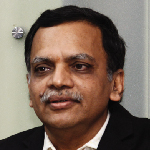CYCLONE FANI CAME. AND, WE SAVED A MILLION LIVES!
1.2 million safely moved in 24 hours with EWDS!

2.6 million text messages, 43,000 volunteers, nearly 1,000 emergency workers, television commercials, coastal sirens, buses, police officers, and public address systems blaring the same message in a loop, in local language, in very clear terms: “A cyclone is coming. get to the shelters.”
It was by far, the largest mass communication exercise undertaken in India, a unique technology driven initiative by the Odisha Government. It witnessed the biggest human evacuation in history – a record 1.2 million people evacuated to safety in 24 hours as Cyclone Fani, one of the strongest cyclones in the last 20 years made a landfall in the state. The United Nations hailed India’s efforts to act speedily and effectively manage the crisis through the early warning system. A large part of transforming this safe vision to reality was engineered by L&T’s Smart World & Communication’s Business Unit by integrating a state-of-the-art emergency response system that is now considered a secure solution to

make India disaster-ready. “The EWDS or the Emergency Warning Dissemination System is a unique and first-of-its-kind project in which we have smartly used technology to save lives,” is how R Srinivasan, Executive Vice President & Head – Smart World & Communication describes this initiative, “involving the development of robust, ready-to-use solutions including infrastructure, technology design and precise solution integration. It was our first attempt and it has paid rich dividend in terms of the number of lives we were able to save. It is eminently scalable and replicable in any emergency warning situation and our full-fledged technology team has the capability to conceptualize holistically and deliver end to end.”

Integrated Command & Control centre is the nerve centre of EWDS rescue operations management

A unique and first-ofits-kind project in which we have smartly used technology to save lives, involving the development of robust, ready-to-use solutions including infrastructure, technology design and precise solution integration.
R Srinivasan
Executive Vice President & Head – Smart World & Communication
Engineering an automated response system
An offshoot of the emerging smart infrastructure solutions, the EWDS is a customized automated response system, for Odisha, that has been in operation since March 15th, 2019, monitored round the clock from the State Emergency Operation Centre, Bhubaneswar. The entire EWDS project is integrated around five major components which were extensively used and instrumental for the evacuation during the cyclone.

30 meter spun concrete tower for Alert Siren System
Alert Tower System
– featured a series of 122 alert towers, installed in six districts covering around 480 km of the Odisha coastline with pre-recorded messages and live announcements, in multiple languages, that helped to mass evacuate people to the nearby shelter homes.
Mass Messaging System
–One of the most advanced messaging systems that sent out warning alerts via LBAS text and voice messages to nearly 2 crore subscribers, during and after Cyclone Fani. The system comprises GBAS (Group Based Alert System) & LBAS (Location Based Alert System) for sending messages to a pre-defined set of recipients as well as to all the mobile phone subscribers in any geographical area in the state. The selected area can be as small as a building or as large as a state. Besides, alerts can also be circulated via facebook, twitter, etc. which is in sync with the Mass Messaging System.


SBMDVT System
– An advanced version of the satellite phone, through which smart phones can be converted to a satellite phone by using the connectivity of a satellite terminal. It has an added facility of net browsing even when normal communication fails and proved beneficial during the crisis, helping the state authorities to keep in touch with the officials in the concerned coastal regions.


Digital Mobile Radio (VHF radio)
proved to be a handy tool, deployed post the disaster when conventional communication systems were down. It works through a separate network establishing communication between the SEOC and all DEOC/BEOC/FLC/ATS locations.
Universal Communication Interface
– A portable device, used exclusively for voice conference calls that can aggregate with land phones, satellite phones, mobile phones and DMR. High level meetings were organised where participants used this technology to connect from remote locations.
Getting safer for a smarter world
After the cyclone subsided, the project team continued assisting the authorities with the damage assessment, working in tandem with the state officials during their meet ups with the State Government, the World Bank, the UNICEF and the National Geographic Channel that covered the crisis. The experience has provided invaluable learnings for India to be effectively disaster-ready and for SW&C it was all about continuing to engineer smart systems to enhance quality of life and make cities safer and smarter.
